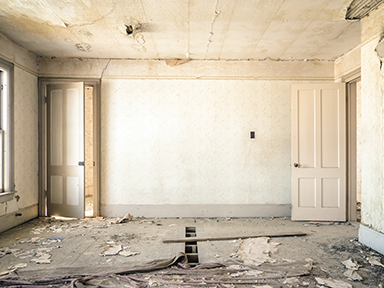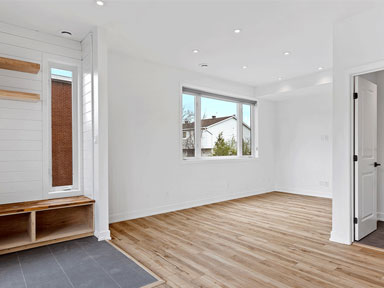Caring for an older property can be a lot of work – and worse if you try to ignore it. The key to looking after an ageing rental is regular maintenance and getting tenants on-board.
Today there are almost 11 million dwellings across the country. Of those, more than 55 per cent (or about six million properties) are 30 or more years older, according to Master Builders Australia.
Once a property is more than 30 years old, it often shows signs of ageing. Homes age slowly, and most of the potential problems gradually accrue.
Common ageing issues
Some of the problems older homes may experience include:
-
Foundation issues such as subsidence.
-
Cracks in walls, ceilings, floors or around window frames.
-
Jamming doors and stuck windows.
-
Water leaks and water damage.
-
Deteriorating or leaking roofs.
-
Poor drainage and waterproofing.
-
Rising damp.
-
Termite damage.
-
Pest infestations (possums, bees, wasps, ants, birds and rodents of every kind).
-
Mould and mildew.
-
Poor ventilation.
-
Decaying timber and dry rot.
-
Peeling and fading paint.
-
No, or damaged, insulation.
-
Outdated electrical wiring.
-
Lead paint (found in most pre-1970 buildings).
-
Asbestos (many pre-1982 buildings have some asbestos including linings of eaves, roofing, wall linings in wet areas and cladding).
-
Plumbing problems such as leaking pipes or tree root incursions.
-
Ageing masonry (e.g. deteriorated pointing or crumbling chimneys).
-
Unsafe features such as worn stairs, loose handrails and uneven steps.
While some issues may require major works to be undertaken, such as upgrading electrical wiring or plumbing systems or replacing the roof, other ageing issues may be staved off with a little forward planning and on-going maintenance.
Maintenance tips
The need for upkeep is usually accelerated as the building ages.
To help prevent ageing issues becoming big problems which affect liveability or safety, landlords should:
-
Undertake regular, preventative maintenance to help stop problems from occurring, for example checking for damage inside and outside the property – cracks, damp, salt damage, leaks, pests.
-
Act to repair what needs to be repaired as soon as possible so the problem doesn’t get worse or more expensive, for example repairing leaking roofs, replacing cracked roof tiles and repairing roof ridging.
-
Plan ahead for major maintenance jobs, for example painting, re-plastering and replacing insulation.
By performing regular preventative maintenance, landlords could save money by not risking small issues turning into big, expensive problems.
Insurance note: It is a condition in landlord insurance policies that the premises must be adequately maintained. If the upkeep is found to be lacking, any claim can be reduced or even denied. The causation report or assessment from the insurer’s loss adjuster will likely detail any findings that may have contributed to the loss. For example, in a claim for a collapsed ceiling following a storm, if old water stains are found on the ceiling plaster indicating that water had been entering the roof space for a long period and not just as result of the storm, the claim may be impacted.
Supporting tenants
While it is important for landlords and agents to be on top of repairs and maintenance, it is also wise to support tenants in caring for the property. Ask tenants to:
-
Immediately notify you of any safety issues such as faulty electricals, gas leaks, plumbing issues or flooding.
-
Not wait for an inspection to inform you about issues such as damage to the roof, leaking pipes, overflowing gutters, loose handrails, damaged steps, lighting outages near stairs, damaged fixtures and fittings.
-
Advise you of any concerns such as worsening cracks or water stains, mould, bubbling paint, sticking windows and doors, lifting floorboards, uneven paths.
-
Keep the premises clean (to help limit the risk of pest infestation).
-
Use exhaust fans or air bathrooms, laundries and kitchens to stop mould forming.
-
Regularly check that drains are not blocked by leaves or other debris.
Older properties and insurance – a summary
An older property comes with more risks and there are issues in older homes like plumbing problems and unsafe electrical wiring of which insurance companies are wary. These increased risks may lead to increased premiums. At EBM RentCover, if your property is more than 70 years old, we require it to have been rewired and replumed in the past 35 years.
In addition, like other property insurances, landlord insurance policies do not include cover for damage that occurs over time, normal wear and tear, damage caused by pests, or mould removal.
While insurance is important, if you own an aging rental property, regular upkeep and maintenance is important to help avoid gradual disaster. If you have questions about insuring your property, please get in touch with a member of our Expert Care team – 1800 661 662.
*While we have taken care to ensure the information above is true and correct at the time of publication, changes in circumstances and legislation after the displayed date may impact the accuracy of this article. If you need us we are here, contact 1800 661 662 if you have any questions.
You may also like
View all
Damage is damage, right? Well, not when it comes to insurance...

To avoid arguments, it helps to know who is responsible when it comes to tasks around the rental property...

Vacant property may result in no rental income and insurance. We explain how and why...



